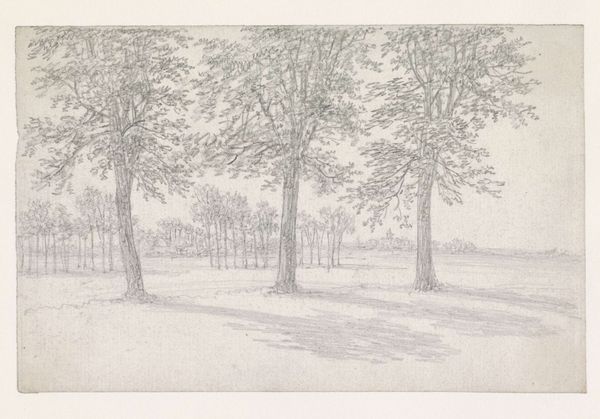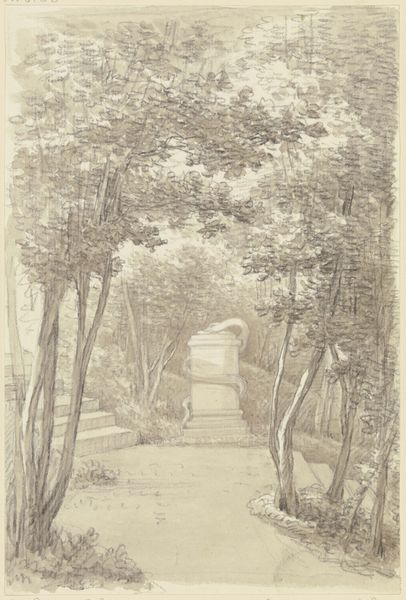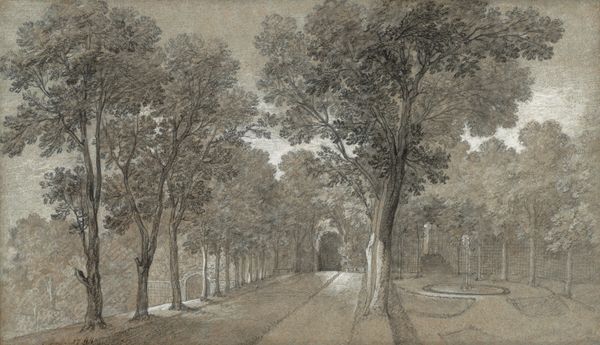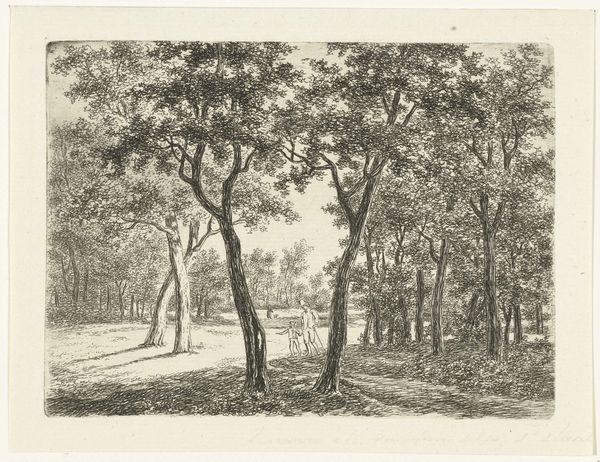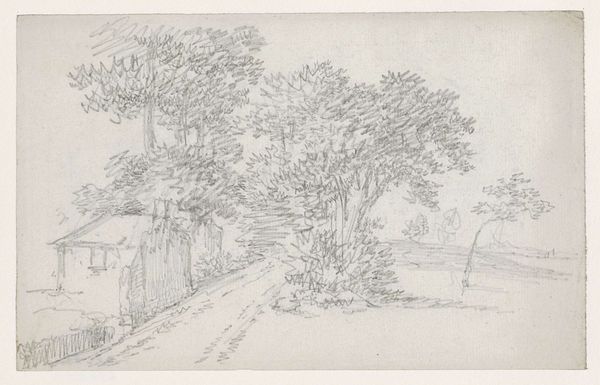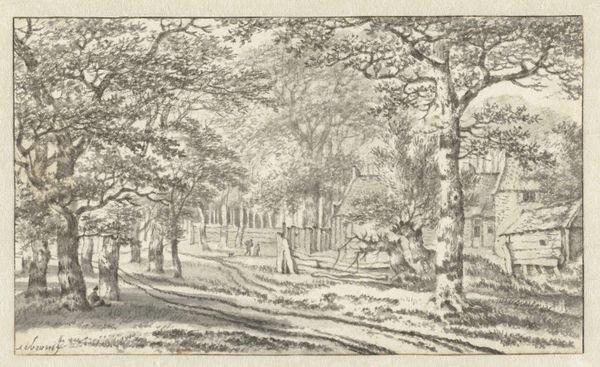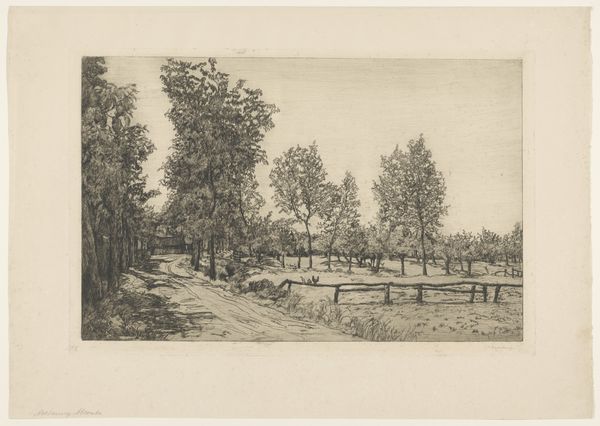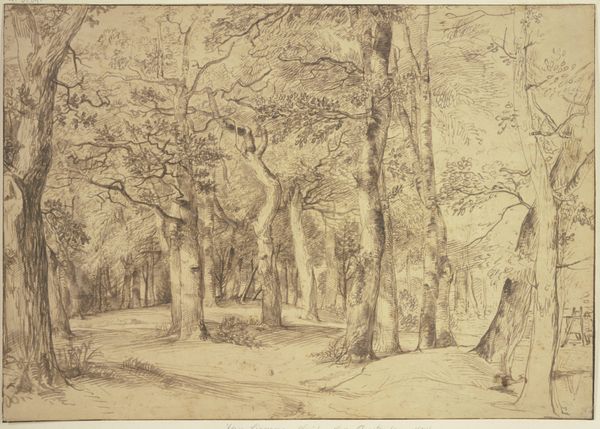
drawing, pencil
#
drawing
#
pencil sketch
#
old engraving style
#
landscape
#
etching
#
romanticism
#
pencil
#
line
#
realism
Dimensions: height 103 mm, width 162 mm
Copyright: Rijks Museum: Open Domain
Curator: This pencil drawing is titled "Straatweg met vier rijen bomen," or "Road with Four Rows of Trees," created by Georges Michel sometime between 1773 and 1843. Editor: Immediately, I'm struck by the symmetry, almost a severe linearity softened by the textured, organic forms of the trees. There is an atmosphere that hovers between starkness and romantic yearning. Curator: That interplay is key. Consider the avenue—a symbol of power and control, a very ordered space, traditionally imposed on the landscape. Yet, here, the trees seem to almost rebel against that rigid order. Their branches intermingle, blurring the strict lines. Editor: Absolutely. The artist uses the trees, with their gnarled, individual forms, to destabilize what could have been a purely hierarchical, almost authoritarian image. The path is also interesting: there are carriages driving further into the work that, considering the era in which Michel worked, indicate a certain amount of industrial development. It highlights themes of societal class and movement in the composition. Curator: Also, observe how the avenue, acting as a perspectival device, guides the viewer's eye directly into the heart of the composition. Think about how we are subtly guided, even controlled, as viewers and, metaphorically, as citizens. This mirrors the structures of power inherent in these meticulously planned landscapes. Editor: It also speaks to the human impulse to categorize and systematize. The avenue is such an archetypal symbol—repeated in countless estates across Europe, each expressing dominance over the natural landscape, whether symbolically or physically. I find the muted color scheme evocative; the grayscale effect in conjunction with a linear style invokes memories of the Industrial Revolution in both Europe and America. The choice of trees and how they line the center path in itself seems rife with symbolism. Curator: Yes, precisely. What is the social and historical context that gives this lane its purpose and placement in society? What rituals and routes took place throughout time on this path and in similar paths like it? And I see the work being in pencil not just as a practical decision, but also indicative of fleeting impressions, almost like memory itself. Editor: Yes, that element of ephemerality. I can really appreciate how Michel invites a critique of imposed order. The natural world pushes back through time. I am thankful I took time with this drawing; the initial starkness slowly reveals deeper, very timely layers of societal power and structure. Curator: It certainly reveals a landscape caught in transition—nature reshaped by societal order yet eternally resisting, a dialogue we are still engaged in today.
Comments
No comments
Be the first to comment and join the conversation on the ultimate creative platform.
